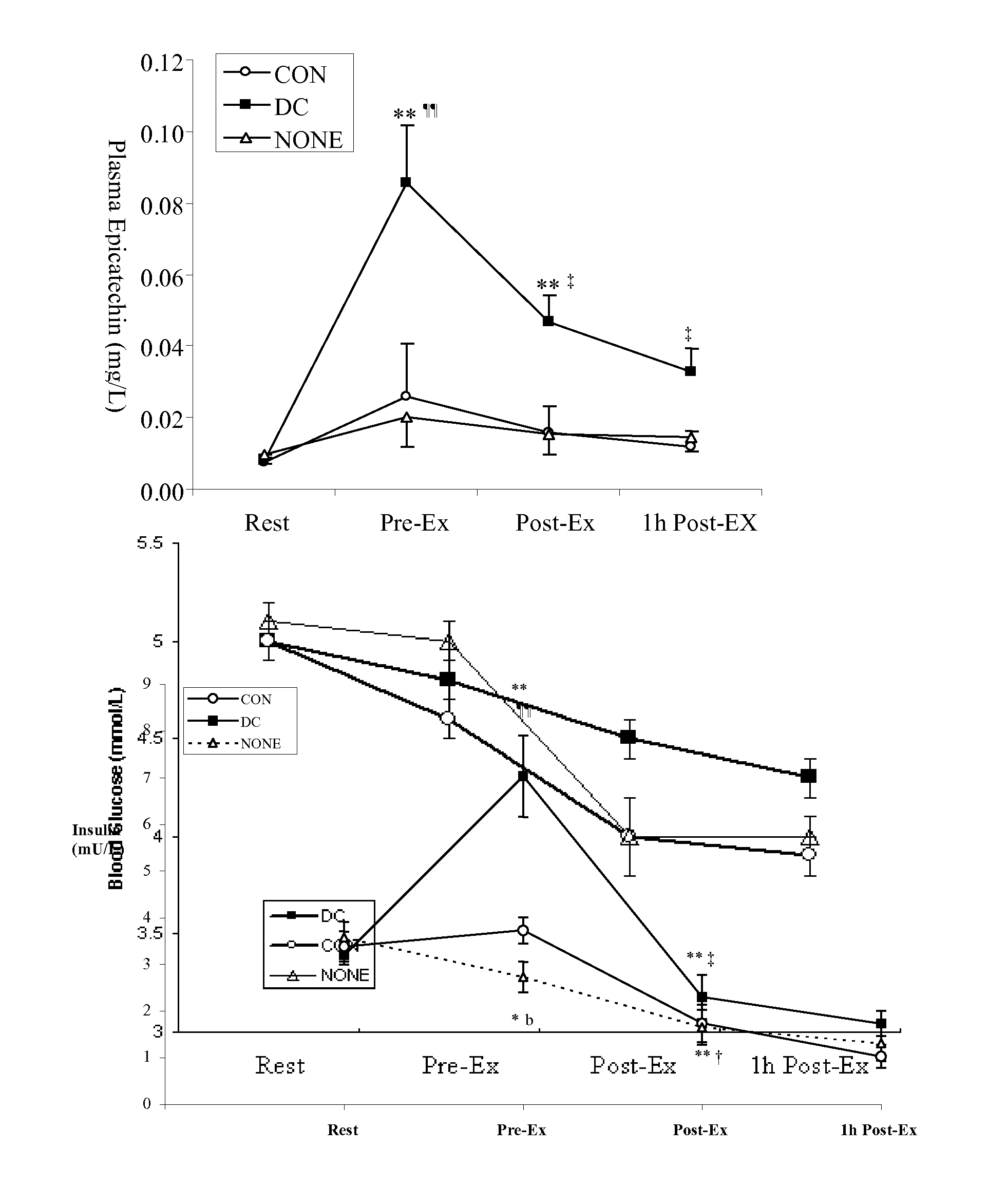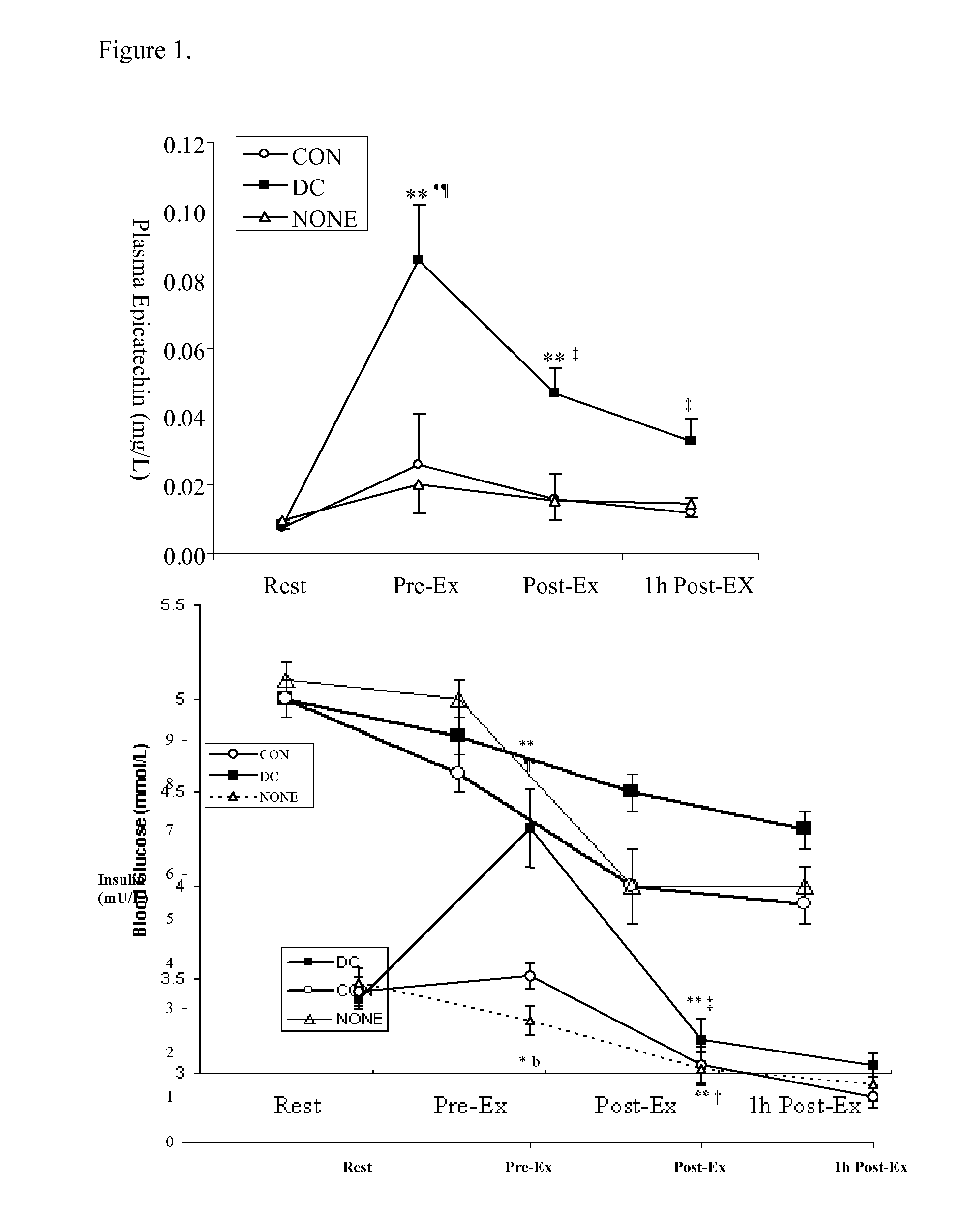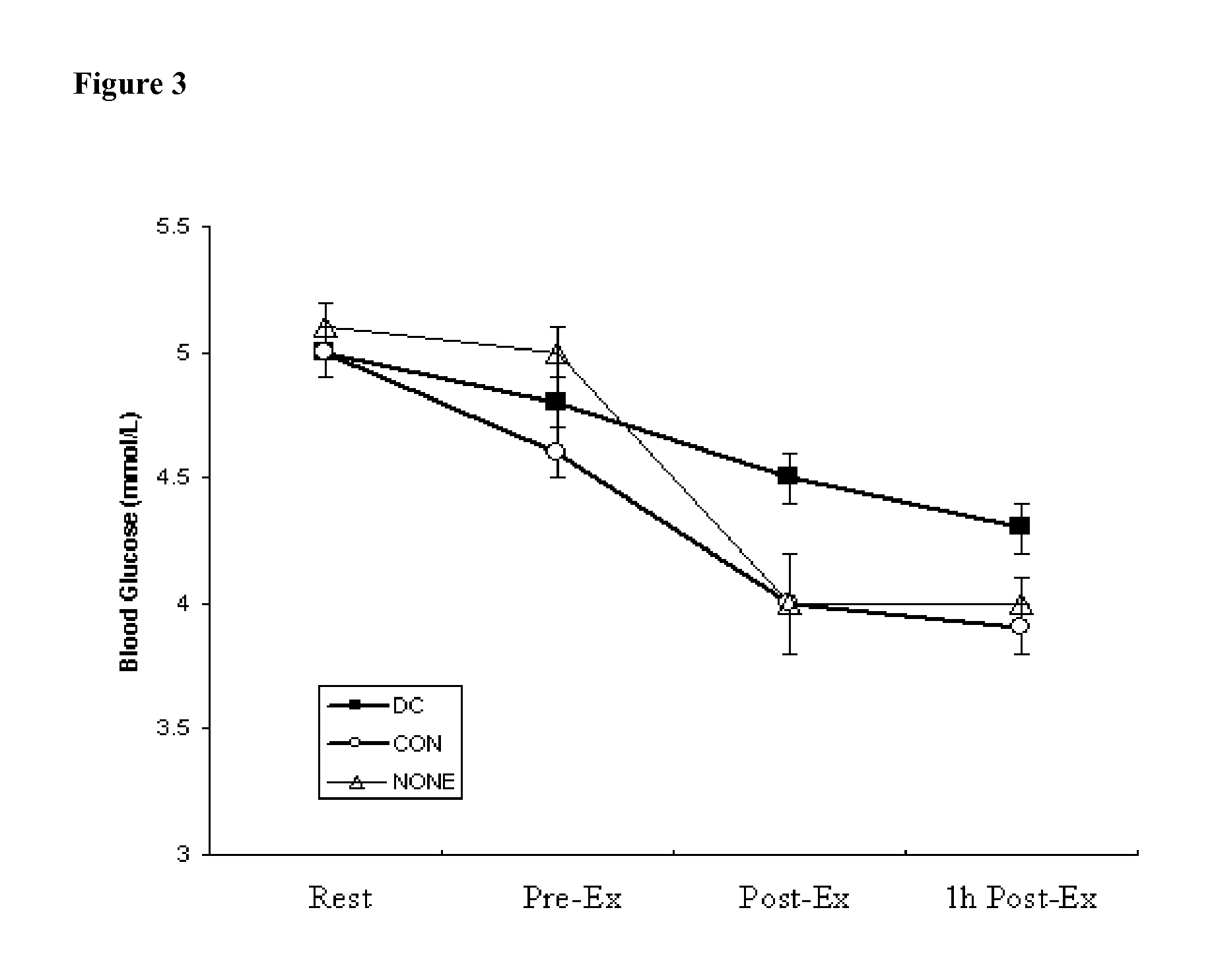Reduction of oxidative stress damage during or after exercise
a technology exercise, applied in the field of oxidative stress damage reduction during or after exercise, can solve the problems of reducing the favourable adaptation of exercise training, oxidative stress damage in the worked muscle, and high doses of antioxidant vitamins, so as to inhibit the reduction of post-exercise blood glucose and reduce oxidative stress damag
- Summary
- Abstract
- Description
- Claims
- Application Information
AI Technical Summary
Benefits of technology
Problems solved by technology
Method used
Image
Examples
example 1
[0059]The test chocolate used (DC) was a 100 gram tablet of dark chocolate (70% cocoa solids) containing cocoa liquor, sugar, cocoa butter, milk fat, lecithin and vanilla having a total fat content of 44%. The control chocolate ((CON) of iso-fat, iso-carbohydrate control was as closely matched as possible in terms of fat and carbohydrate content and total energy. 71 g of the control chocolate (CON) contained all of the same ingredients as the test chocolate (DC) except the cocoa liquor (0%) but contained 41 g cocoa butter to obtain a fat content of 62% so that 71 g of the control chocolate contained the same amount of fat as 100 g of DC.
[0060]14 fasting, healthy men aged 21-23 and weighing from 70-73 kg completed a food record diary for the 48 h period before the first trial (habituation) and were required to follow the same diet during the 48 h prior to each main trial. They were all non-smokers and were required to abstain from alcohol, caffeine and heavy exercise for 48 h prior t...
example 2
[0092]The test chocolate used (DC) was a 100 gram tablet of dark chocolate (70% cocoa solids) containing cocoa liquor, sugar, cocoa butter, milk fat, lecithin and vanilla having a total fat content of 44% and delivers 551 calories. The control chocolate (CON) was an iso-caloric control which was as closely matched as possible to the dark chocolate in terms of calorie content and total energy. 76 g of the control chocolate (CON) contained all of the same ingredients as the test chocolate (DC) except the cocoa liquor (0%) so that 76 g of the control chocolate contains 47 g fat and 28 g sucrose and delivers 551 calories (the same amount of calories as 100 g of DC).
[0093]In this test, 20 physically active, healthy men aged 18-35 and weighing about 73-76 kg were given, in a controlled randomised manner, either 2×40 g of Nestlé Noir, or 2×30.4 g of iso-calorie, iso-carbohydrate control per day for two weeks and also 40 g of Nestlé Noir (or 30.4 g of iso-calorie, iso-carbohydrate control) ...
PUM
| Property | Measurement | Unit |
|---|---|---|
| time | aaaaa | aaaaa |
| time | aaaaa | aaaaa |
| time | aaaaa | aaaaa |
Abstract
Description
Claims
Application Information
 Login to View More
Login to View More - R&D
- Intellectual Property
- Life Sciences
- Materials
- Tech Scout
- Unparalleled Data Quality
- Higher Quality Content
- 60% Fewer Hallucinations
Browse by: Latest US Patents, China's latest patents, Technical Efficacy Thesaurus, Application Domain, Technology Topic, Popular Technical Reports.
© 2025 PatSnap. All rights reserved.Legal|Privacy policy|Modern Slavery Act Transparency Statement|Sitemap|About US| Contact US: help@patsnap.com



